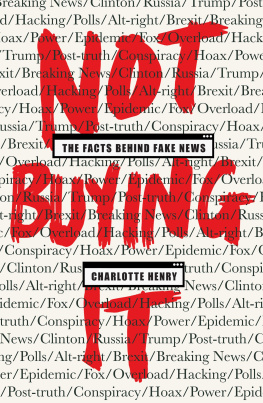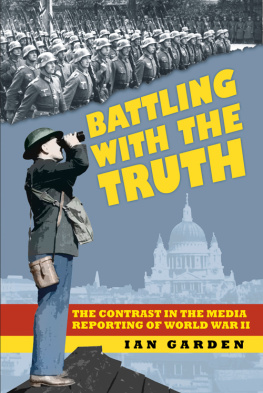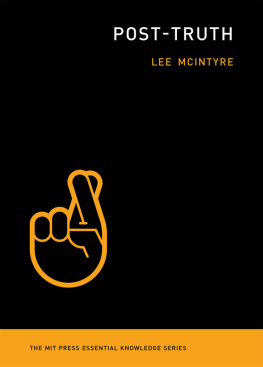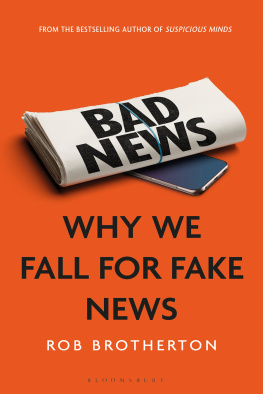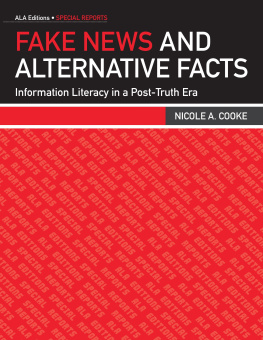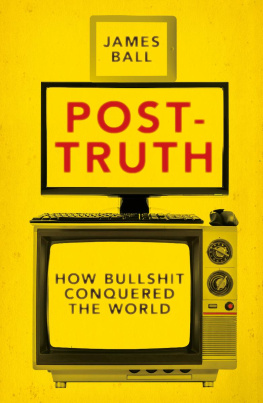The right of Charlotte Henry to be identified as the author of this work has been asserted in accordance with Section 77 of the Copyright, Designs and Patents Act 1988. No part of this publication may be copied, reproduced, stored in a retrieval system, or transmitted, in any form or by any means without the prior permission of the publisher, nor be otherwise circulated in any form of binding or cover other than that in which it is published and without a similar condition being imposed on the subsequent purchaser.
All references to websites were correct at the time of writing.
The year is 2019, and falsehood and conspiracy have become prominent parts of political discourse around the globe, used by some of the most powerful people in the world to win elections, maintain support from their political bases and destroy their rivals. At the same time, these politicians are branding mainstream media outlets as fake news in an attempt to discredit those who legitimately seek to hold them to account.
Meanwhile, the media itself regularly accuses politicians, and even some other media outlets, of spreading fake news of lying. All too often, they have good reason for doing so. This is an age in which the truth no longer seems to be sacred. Facts do not matter.
Indeed, Donald Trump, who at the time of writing this book is the president of the United States no less, happily dismisses some of the worlds leading media institutions such as CNN and the New York Times as failing and fake news. We normally see this when they seek answers to difficult questions about his conduct and policies or simply publish something that he does not like.
For example, in March 2019 Trump took to the airwaves and Twitter claiming complete exoneration by Special Counsel Robert Muellers investigation into his campaign.
In the UK, the 2016 Brexit referendum campaign was tainted by lies and misinformation, some of it infamously painted on the side of a bus. So toxic was the atmosphere that Labour MP Jo Cox was attacked and killed by a far-right thug just days before the vote. The discourse in the years following the poll has not improved much. The negotiation period has been tense and some of the language used against Prime Minister Theresa May utterly vicious and often sexist. One of the MPs in Mays own Conservative Party even told a reporter that the prime minister should bring her own noose to a party meeting.
Both sides of the divide in British politics threw out claim and counterclaim, making it almost impossible for members of the general public to decipher what was actually going on. The result was close and divisive tensions remained long after the votes were counted. If anything, they increased, not dissipated, as the painful negotiation process progressed.
Technology inevitably sits at the heart of this story. Information and misinformation are spread with such ease now that lies can take hold in the blink of an eye. The social element of new communications technology means that these lies are so much easier to believe after all, its your friend, whether real or digital, who is sharing the information with you.
It may be hard for some people to accept, but most journalists do genuinely go into work with the best of intentions they want to write good, accurate stories that inform, entertain and hold powerful people to account. It is fair to say that, similarly, most politicians go into public service wanting to improve the lives of their constituents. The problem is that a variety of scandals means that far too many now profoundly doubt this.
As we shall see, fake news is not a new phenomenon, but it is clear that something has changed. This book seeks to understand how this has come to pass and to offer some potential ways of fixing the problem. It is based on my own experience working in the media and politics, as well as a range of exclusive interviews with experts working in the media, politics and academia.

